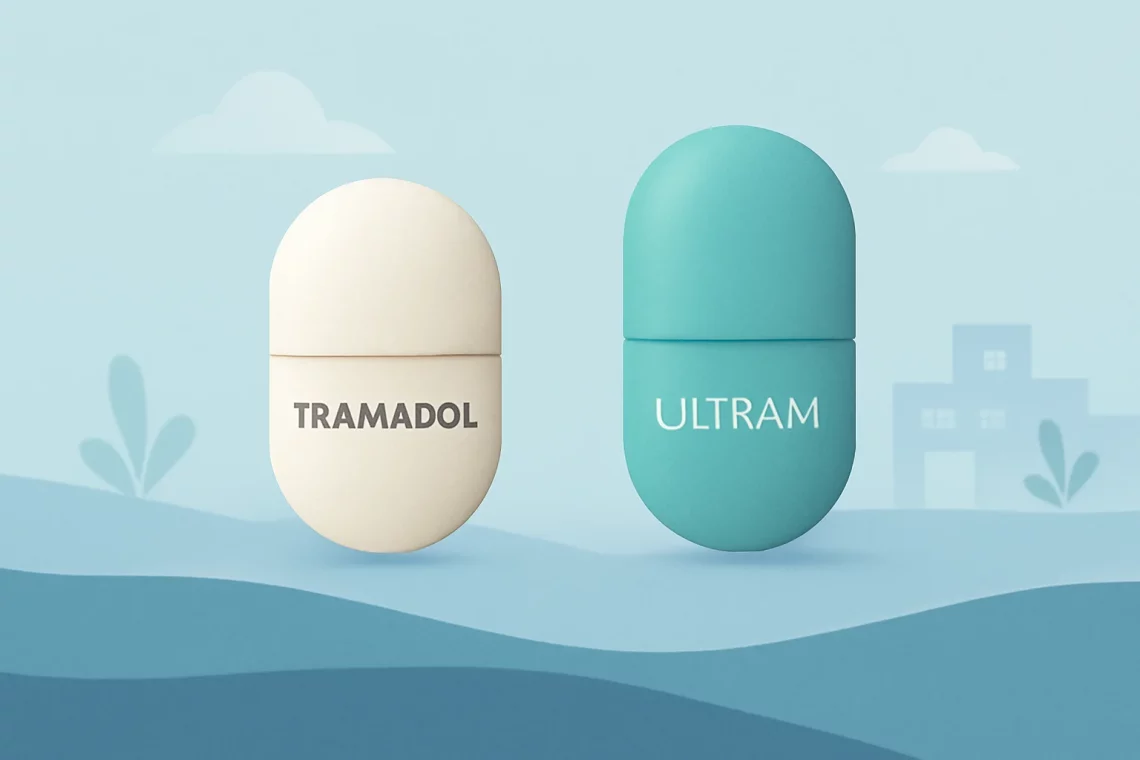
Tramadol vs Ultram: Understanding Their Differences and Uses
Tramadol and Ultram are two terms that often evoke confusion among patients and healthcare providers alike. At first glance, one may wonder if they are distinct medications or perhaps different names for the same drug. The truth is that both terms are intricately linked, yet they represent different aspects of pain management strategies. Understanding the nuances between these terms is crucial for anyone navigating the world of pain relief medications.
Tramadol is a prescription medication primarily used to treat moderate to moderately severe pain. It works by altering the way the brain and nervous system respond to pain. On the other hand, Ultram is a brand name for tramadol, and it is one of the most commonly prescribed formulations of this medication. The importance of knowing these distinctions cannot be overstated, especially for patients who may be seeking pain relief options or exploring the effectiveness and safety of their prescribed medications.
By delving deeper into the characteristics, uses, and potential side effects of tramadol and Ultram, individuals can make informed decisions about their pain management options. This understanding can lead to better communication with healthcare providers and ultimately improve the quality of life for those experiencing chronic pain.
Understanding Tramadol: The Pain Relief Medication
Tramadol is a synthetic opioid analgesic that has been utilized in medical practice for several years. It is primarily indicated for the treatment of moderate to moderately severe pain, making it a popular choice among healthcare providers. One of the unique aspects of tramadol is its dual mechanism of action. Unlike traditional opioids, which primarily block pain receptors in the brain, tramadol not only binds to these receptors but also inhibits the reuptake of neurotransmitters such as serotonin and norepinephrine. This combined approach helps to enhance its pain-relieving effects.
The medication is available in various forms, including immediate-release and extended-release tablets, as well as an oral solution. The flexibility in formulation allows healthcare providers to tailor the treatment to the individual needs of patients. For instance, immediate-release tramadol can provide quick relief for acute pain, while extended-release formulations are often utilized for chronic pain management.
Despite its effectiveness, tramadol is not without risks. As with any medication, there are potential side effects, including dizziness, nausea, constipation, and in some cases, risk of dependency. It is essential for patients to discuss their medical history and any other medications they are taking with their healthcare provider to minimize the risk of adverse effects.
Additionally, tramadol is classified as a Schedule IV controlled substance in many regions, indicating that it has a lower potential for abuse compared to stronger opioids. However, patients should still approach this medication with caution, especially if they have a history of substance use disorders.
Overall, tramadol serves as a valuable tool in the arsenal of pain management, but it is crucial to use it responsibly and under the guidance of a healthcare professional.
Ultram: A Brand Name with Special Features
Ultram is the brand name for tramadol and is marketed under various formulations. As a brand, Ultram has gained recognition for its effectiveness in providing pain relief while having a generally favorable safety profile when used as directed. The branding of tramadol as Ultram has helped it become one of the more commonly prescribed medications for pain management, especially in outpatient settings.
One of the key features of Ultram is its formulation options. The immediate-release version allows for rapid pain relief, while the extended-release version is designed for patients who require continuous pain management throughout the day. This flexibility makes Ultram suitable for a wide range of patients, from those recovering from surgery to individuals dealing with chronic pain conditions such as arthritis.
In terms of marketing, Ultram has benefited from extensive advertising campaigns that have educated both healthcare providers and patients about its use and benefits. This has resulted in increased awareness and acceptance of tramadol as a viable alternative to traditional opioids, especially in light of the growing concerns over opioid addiction and abuse.
Nonetheless, it is essential to recognize that Ultram is not without its limitations. Some patients may experience side effects similar to those associated with tramadol, including nausea, dizziness, or allergic reactions. Furthermore, the potential for drug interactions exists, particularly with other medications that affect serotonin levels, such as certain antidepressants.
As with any medication, patients should engage in an open dialogue with their healthcare provider regarding the potential benefits and risks associated with Ultram. This proactive approach ensures that pain management strategies are tailored to individual needs while minimizing the risk of adverse effects.
Comparing Tramadol and Ultram: Are They Different?
At first glance, one might assume that tramadol and Ultram are entirely different entities due to the branding. However, it is essential to understand that Ultram is simply a brand name for tramadol. This distinction is crucial for patients seeking clarity on their pain management options.
Both tramadol and Ultram contain the same active ingredient and provide the same therapeutic benefits. The differences lie primarily in the branding, marketing, and formulation options available. Patients may find that their healthcare provider prescribes either tramadol or Ultram, depending on their familiarity with the brand or specific formulation preferences.
In terms of efficacy, studies have shown that both tramadol and Ultram are effective in managing pain. However, individual responses may vary. Some patients may find that one formulation works better for them than the other, leading to a discussion with their healthcare provider about adjusting their treatment plan.
Another aspect to consider is the pricing and availability of the two options. Brand-name medications like Ultram may typically come at a higher cost compared to their generic counterparts. Patients with insurance coverage may find that their plans offer different levels of coverage for brand-name versus generic medications, impacting their out-of-pocket expenses.
Ultimately, whether a patient is prescribed tramadol or Ultram, it is crucial to follow the recommended dosage and guidelines provided by their healthcare provider. Both options can be effective for pain management, but individual experiences may vary, necessitating ongoing communication and adjustment of treatment plans.
Potential Side Effects and Risks Associated with Tramadol and Ultram
While tramadol and Ultram can provide significant relief for many patients, it is vital to remain aware of the potential side effects and risks associated with their use. Understanding these aspects can empower patients to recognize adverse reactions early and seek appropriate medical attention if necessary.
Common side effects of tramadol and Ultram include nausea, dizziness, constipation, and headaches. These side effects are typically mild and may subside as the body adjusts to the medication. However, if they persist or worsen, patients should contact their healthcare provider for guidance.
More serious side effects can occur, albeit less frequently. These may include seizures, respiratory depression, and an increased risk of serotonin syndrome, particularly when used in conjunction with other medications that affect serotonin levels. Symptoms of serotonin syndrome can include agitation, hallucinations, rapid heart rate, and changes in blood pressure, and it requires immediate medical attention.
The potential for dependency and misuse, while lower than that of stronger opioids, is still a consideration for tramadol and Ultram users. Patients with a history of substance use disorders should discuss their concerns with their healthcare provider to determine the best course of action for managing their pain.
Additionally, it is essential to avoid abrupt discontinuation of tramadol or Ultram without consulting a healthcare provider. Sudden cessation can lead to withdrawal symptoms, including anxiety, insomnia, and flu-like symptoms.
In conclusion, while tramadol and Ultram can be effective options for pain relief, they are not without their risks. Patients should approach their use with caution, adhering to prescribed dosages and maintaining open communication with their healthcare providers to ensure safe and effective pain management.
**Disclaimer**: This article is not intended as medical advice. Always consult with a qualified healthcare professional regarding any health concerns or medication questions.




